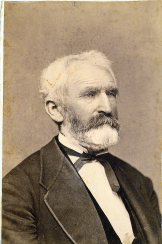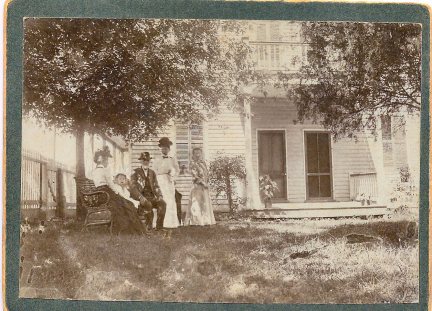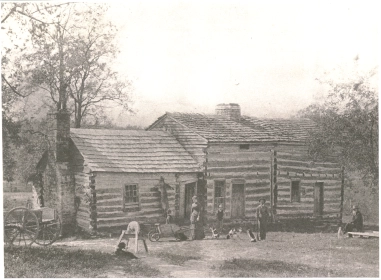
When asked who founded the community of O”Fallon, Nicolas and Arnold Krekel are named. These two German born brothers both played important roles in O’Fallon’s beginnings, although only Nicolas called O’Fallon home and he is credited with founding the city.
In 1832 the brothers and their extend family set sail from Bremen, Germany for a new life in America, Arnold was 17 and Nicolas was 10 years old. Katerina Krekel, their mother, died en route to Missouri and was buried in Louisville, Kentucky. The rest of the family journeyed on and settled near Augusta, Missouri in St. Charles County. Franz Krekel, the boy’s father, purchased 110 acres of heavily timbered land for which he paid $25.00 and compensated the previous owner with an additional $9.00 for the log cabin on the property.
Nicholas worked on his father’s farm and in 1848, fought in the Mexican War under General Price. It is said that on August 6, 1856, Nicholas came to O’Fallon. “He walked with his axe and carpetbag from Green Bottoms on the Missouri River where he’d been farming. He came through Cottleville to J. G. Trevy’s, now known as Woodlawn (Seminary), where he stayed for one year until he married.” Nicholas married Wilhelmena Moritz on August 15, 1857 and they raised seven children.

Meanwhile, Arnold was making his mark in St. Charles. He served as a justice of the peace, school board member, investor, lawyer, surveyor, engineer, founder of newspaper for the German immigrant community, and as state representative. Arnold was able to build enough wealth to buy an investment property in what is now O’Fallon in 1855. He laid out the town, then called the Krekel Addition, and granted a right-of-way through the town to John O’Fallon’s North Missouri Railroad.

Nicholas Krekel built the first home in O’Fallon facing the North Missouri Railroad. Nicholas cleared his land and originally built a two room log cabin. Later on he built “a one and a half story, gable to the south, 32 feet long, 22 feet wide and arranged for merchandise.” Nicholas’ general store was on the first floor of the house and when the Northern Missouri Railroad came through Krekel’s Addition, the home also served as the agent’s office, a post office and purportedly even a library. We do not yet know at what point the house was expanded to its current dimensions, but it certainly was sometime in the late 1800’s.

In 1857 Nicolas became the town’s first postmaster and stationmaster of the O’Fallon Depot. Nicholas served as postmaster for 32 years, station agent for four years and served with his brother in the home guard militia during the Civil War. Nicholas Krekel died on February 6, 1910 and was buried in Assumption Cemetery. The home remained in the family until the death of Mary Krekel Westhoff, Nicholas and Wilhelmena’s daughter, in 1966. The Krekel home still stands today, across from City Hall at the corner of Civic Park Drive and Main Street. It is the oldest home still standing within the city. The home is currently undergoing renovations and will be opening as a business once more in the fall of 2017. Many direct descendants of Nicholas Krekel and Wilhelmina still live in O’Fallon today.



 The Zumwalt family were Methodist and the first Methodist sacrement in Missouri was administered in the Zumwalt home by Rev. Jessie Walker in 1807. It is also believed that when Jacob’s with Catherine died on the homestead in 1799 her burial was the first christian burial in the area. With no Methodist church nearby, her death was recorded in local Catholic records. Jacob lived on the homestead for nineteen years, and raised ten children from two wives. He moved on to Pike County, Missouri with one of his sons in 1817. He passed away there three years later.
The Zumwalt family were Methodist and the first Methodist sacrement in Missouri was administered in the Zumwalt home by Rev. Jessie Walker in 1807. It is also believed that when Jacob’s with Catherine died on the homestead in 1799 her burial was the first christian burial in the area. With no Methodist church nearby, her death was recorded in local Catholic records. Jacob lived on the homestead for nineteen years, and raised ten children from two wives. He moved on to Pike County, Missouri with one of his sons in 1817. He passed away there three years later.
